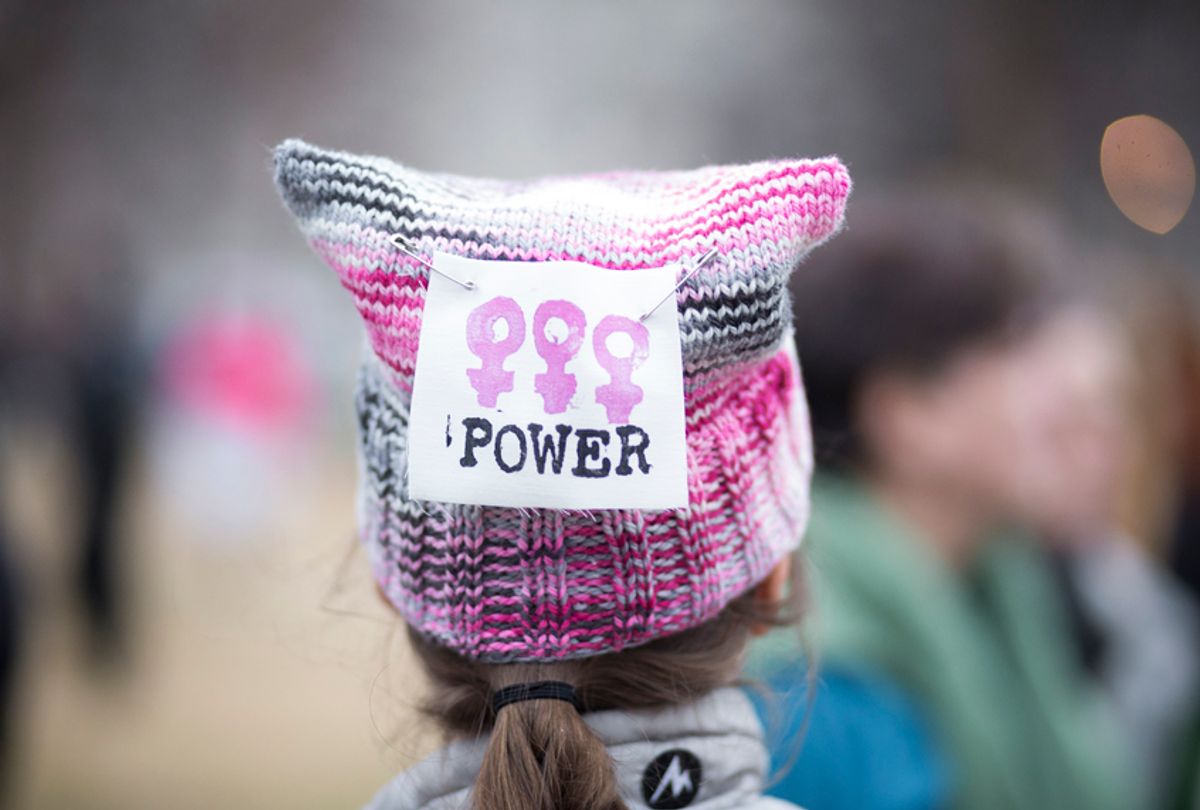Economists estimate that at the current rate of progress, American men and women will earn equal income in another 200 years. Considering the past century has already hosted three separate feminist movements that successfully granted women the right to vote, passed Roe v. Wade, and established women's right to work, today's feminists will demand we work a little quicker than that. It’s hard to fathom waiting another two centuries for equal pay. Dozens of other countries are already beating us in the global race to financial equity, so it certainly is possible. The U.S. has crucial lessons to learn from these nations.
The gender pay gap is not just a problem in the U.S., where women make 76 cents to a man's dollar (note that the pay gap is even wider for women of color). Globally, the problem is dire. As World Economic Forum writes, “At the current rate of change, and given the continued widening of the economic gender gap already observed last year, it will now not be closed for another 217 years.” In its annual study of the countries with the widest and smallest gender pay gaps, WEF recognized the countries that have made the most progress to equal pay. 2017’s list of most equitable countries lists the following among the top ten:
-
Iceland
-
Norway
-
Finland
-
Rwanda
-
Sweden
-
Nicaragua
-
Slovenia
-
Ireland
-
New Zealand
-
Philippines
By comparison, the United States ranks #49. So what are the takeaways from this year's list?
Elsewhere in Europe, it has also taken policy to make progress. Slovenia has made closing the gender pay gap a priority, and has used government intervention to do so. According to the EU, “The most important contribution in the last few years to the equal opportunities policy framework in Slovenia in general and concerning the gender pay gap in particular was the adoption of the Resolution on the National Programme for Equal Opportunities of Women and Men (2005–2013) by the Parliament in October 2005.” The Resolution aims to reduce gender discrimination and employment differences between men and women, reduce the pay gap, and boost female entrepreneurship in order to promote equal opportunity. Slovenia’s government prepares biannual plans to enact these changes. It’s a significant investment of energy on part of the government, but it has allowed Slovenia to close their pay gap faster than any other nation in the EU.
The rub is, of course, Iceland’s and Slovenia's tactics require close government supervision, and considering the current American administration, it’s unlikely that any such policy would fly these days in the U.S. Trump has actually already undone Obama-era regulations over the gender pay gap and shows no interest in prioritizing the issue moving forward.
Beyond federal intervention, then, is there any way we in the U.S. can learn from our peers to achieve financial gender equity? Other countries on the WEF lists have closed their gaps in other ways. For Rwanda, this happened, in part, unintentionally. Many proclaim surprise when learning that Rwanda has the 4th highest gender equality ranking in the world. It is, after all, one of the least economically developed countries in the world, according to the U.N.'s measure. As WEF writes of Rwanda, “This high rate of female workforce participation is in part out of necessity, and has its roots in the country’s devastating genocide. Over two decades ago, around 800,000 Rwandans were slaughtered in the space of just three months. In the wake of these horrific events, women made up between 60% and 70% of the surviving population. They had little choice but to fill the roles once occupied by men.” In other words, Rwandan women over the past two decades have found themselves in a similar position to American women during WWII, when they were called upon to fill the great labor shortage caused by vast numbers of men entering military service.
But it wasn’t all luck that brought Rwanda this achievement, though. There’s another reason why the African nation ranks highly among the list of most equitable countries by gender: there are a lot of female Rwandan politicians. “Every year for over a decade, Rwanda has topped the global list of countries with the most female political parliamentarians," the WEF writes. "That’s in large part thanks to quotas, put in place following the genocide, stipulating that women must make up 30% of parliamentarians.” The WEF hypothesizes a trickle-down effect of electing more women to office, as “when women work in politics, research suggests they put important but otherwise neglected issues on the table.” Considering the historic number of women running for office this year in the U.S., the future could look bright for equal pay proponents too. The only question is: will it be a near future, a distant future, or a very distant one?
There’s clearly a moral to this story. It will take close government supervision to enact laws that mandate equal pay, not chance or unbridled capitalism. We cannot rely on a benevolent free market to even this playing field. Close oversight at the state or federal level is the only way to ascertain that women are paid as much as men.




Shares